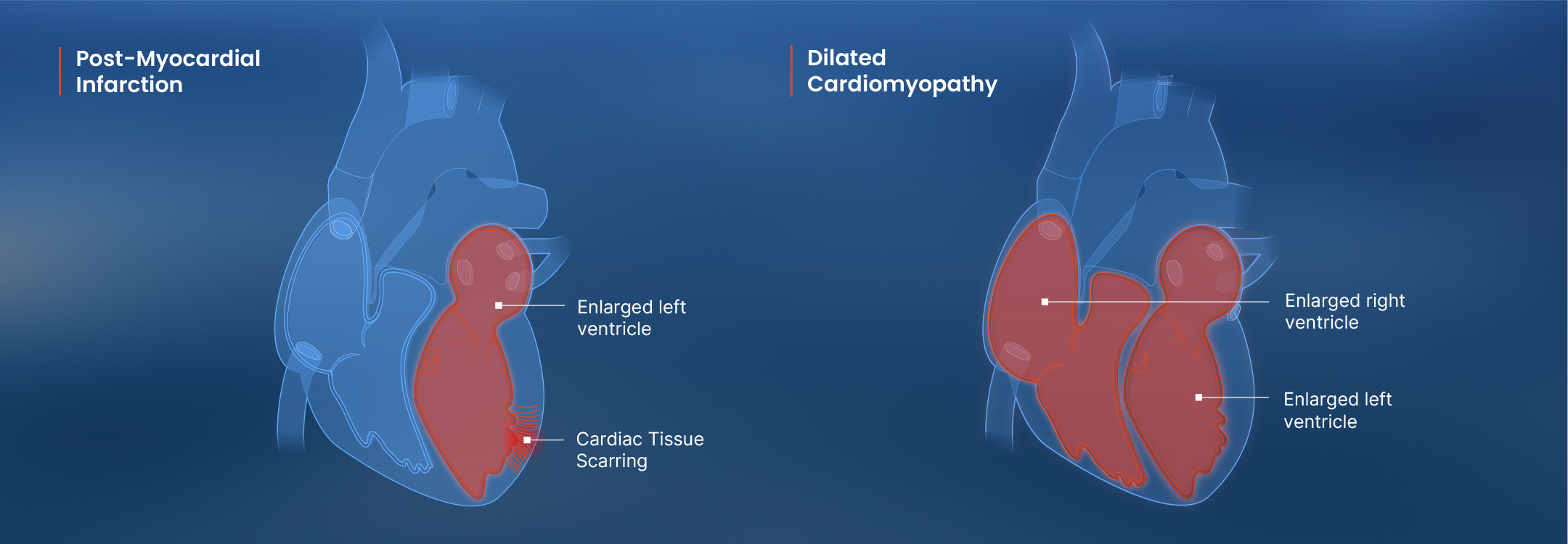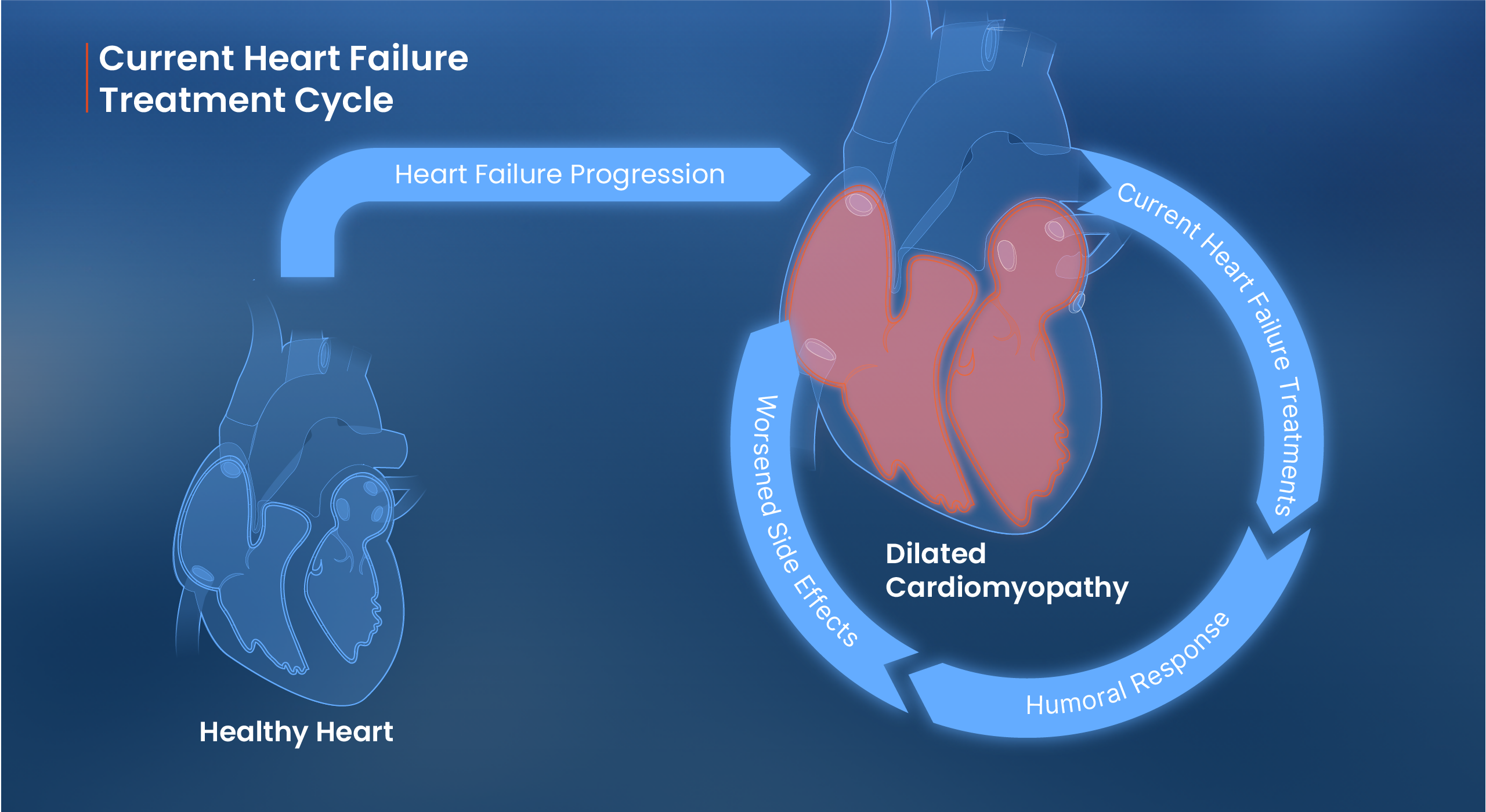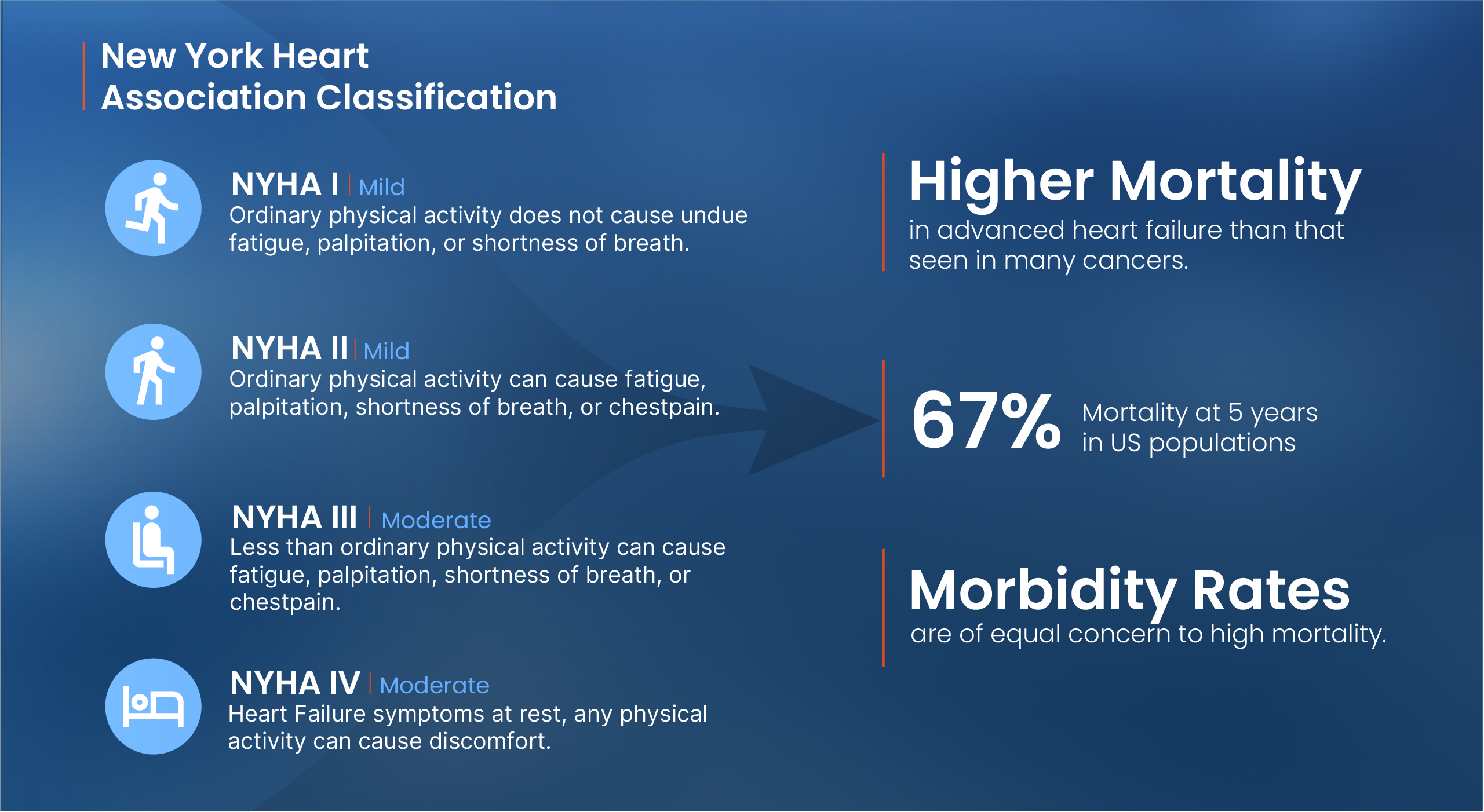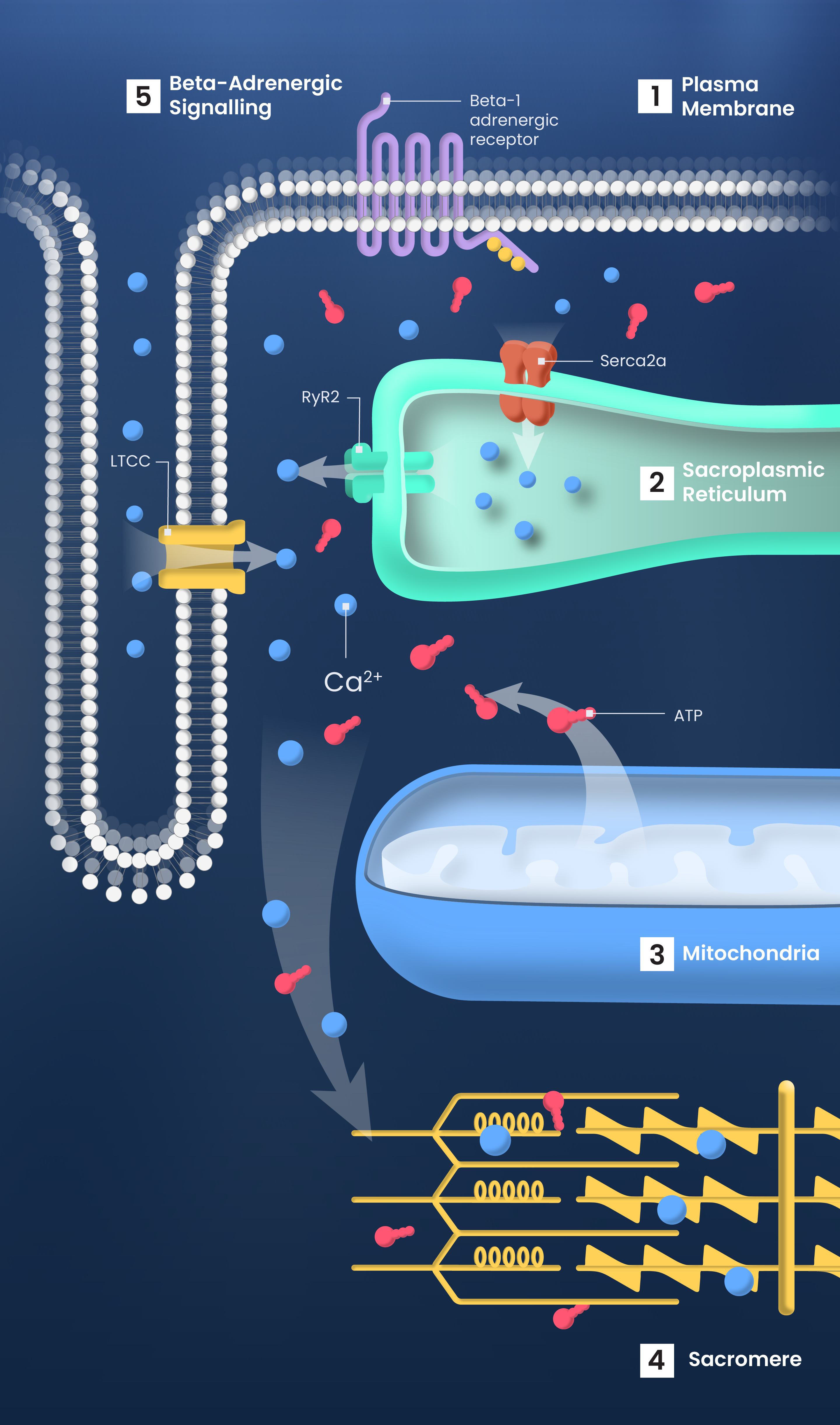Frequency of Heart Failure.
Heart failure is a prevalent and pressing concern, particularly in the aging European populations, affecting over 10% of individuals aged 70 and older (van Riet et al, 2016). In the United States, statistics from 2023 report a striking 16.5% prevalence of heart failure in men over 80 years. Germany sees heart failure as the leading cause for hospital admissions, with a rate of 445 per 100,000 inhabitants (Destatis, 2021).
Mortality rates in heart failure are alarming, reaching 67% at 5 years for US populations, surpassing many cancers. Beyond high mortality, the burden of morbidity is notably distressing. Despite guideline-recommended therapies, patients often require annual readmissions for cardiac decompensation.


10%
Of European individuals over 70 are afflicted with Heart Failure.
445
of 100,000
Inhabitants: Heart failure is the most frequent diagnosis for hospital admissions in Germany
16.5%
Prevalence of Heart Failure in men over 80 years in the United States.
Getting to Grips with Heart Failure.
Causes Heart Failure
Features of Heart Failure
Current Treatments



Getting to Grips with Heart Failure.
Causes Heart Failure

Features of Heart Failure

Current Treatments

Target Selection
Our selection of therapeutic targets is informed by our founding team’s profound grasp of molecular and genetic pathophysiology, along with extensive clinical expertise in cardiovascular diseases.
These targets play pivotal roles in orchestrating the molecular and genetic networks of the heart muscle. Through targeted gene therapy interventions in cardiomyocytes, we aim to correct the disrupted expression or function of these molecules. This approach is grounded in extensive therapeutic validation across human-relevant disease models, showcasing the potential for a lasting improvement in cardiac performance by reversing the molecular pathophysiology and clinical presentation of myocardial weakness.


AaviGen’s Treatment Pipeline.
Our tailored gene therapies are poised to revolutionize cardiovascular care through our heart-specific adeno-associated viral vector technology. Our therapeutic target pipeline allows the development of advanced therapies with the ability to specifically reverse molecular dysfunctions responsible for systolic and diastolic dysfunction of the myocardium and adverse remodelling of the diseased heart, thus restoring the normal activity of prognostically relevant molecular networks related to cardioprotection, contractile performance and energy homeostasis to be comprehensively restored.

Plasma Membrane
Abnormal neurohormonal stimulation with diminished ß-adrenergic responsiveness is a hallmark of heart failure. Our therapeutic targets can improve dysfunctional voltage-dependent calcium channel activity and trans-sarcolemmal calcium entry, respectively, upon aberrant ß-AR downstream stimulation, thereby, restoring the contractile performance reserve of the diseased heart.
Sarcoplasmic Reticulum
Compromised calcium cycling due to sarcoplasmic reticulum dysfunction is a major culprit of the failing heart. Our therapeutic targets can reverse defective ryanodine receptor calcium release channel gating in diseased myocardium throughout the contractile cycle, thereby, boosting systolic sarcoplasmic reticulum calcium release and preventing fatal arrhythmogenic calcium leakage. During the diastolic phase of the contractile cycle, our targets can improve sarcoplasmic reticulum calcium ATPase activity, thereby, aiding in restoring cardiac relaxation and synergizing with systolic actions.
Mitochondria & Energy Metabolism
Abnormal substrate utilization, impaired mitochondrial stress resistance and ultimately depletion of high-energy phosphates are prognostically relevant factors in heart failure progression. Our therapeutic targets beneficially impact cardiac energy metabolism by enhancing mitochondrial resistance to stress and restoration of cardiomyocyte metabolic signaling and oxidative phosphorylation by modulating F1/0-ATPase activity amongst other mitochondrial and metabolic target proteins, thereby, reestablishing high-energy phosphate content.
Contractile Apparatus
Abnormal myofilament mechanics and calcium responsiveness are a major cause of impaired contractile performance of the failing heart. Our therapeutic targets beneficially modulate the function of the giant myofilament element cardiac titin and myofilament calcium sensitivity, thereby, reducing diastolic passive cardiac tension and facilitating calcium dissociation from myofilaments during diastole.
Beta-Adrenergic Signalling
Abnormal ß-AR responsiveness and maladaptive downstream signaling network activity towards pro-death, hypertrophic and inflammatory processes in the failing heart are major culprits for heart failure progression. Our therapeutic targets lead reverse desensitized and aberrant ß-AR dependent signaling at the level of dysfunctional signaling and transcriptional molecular multipliers.
